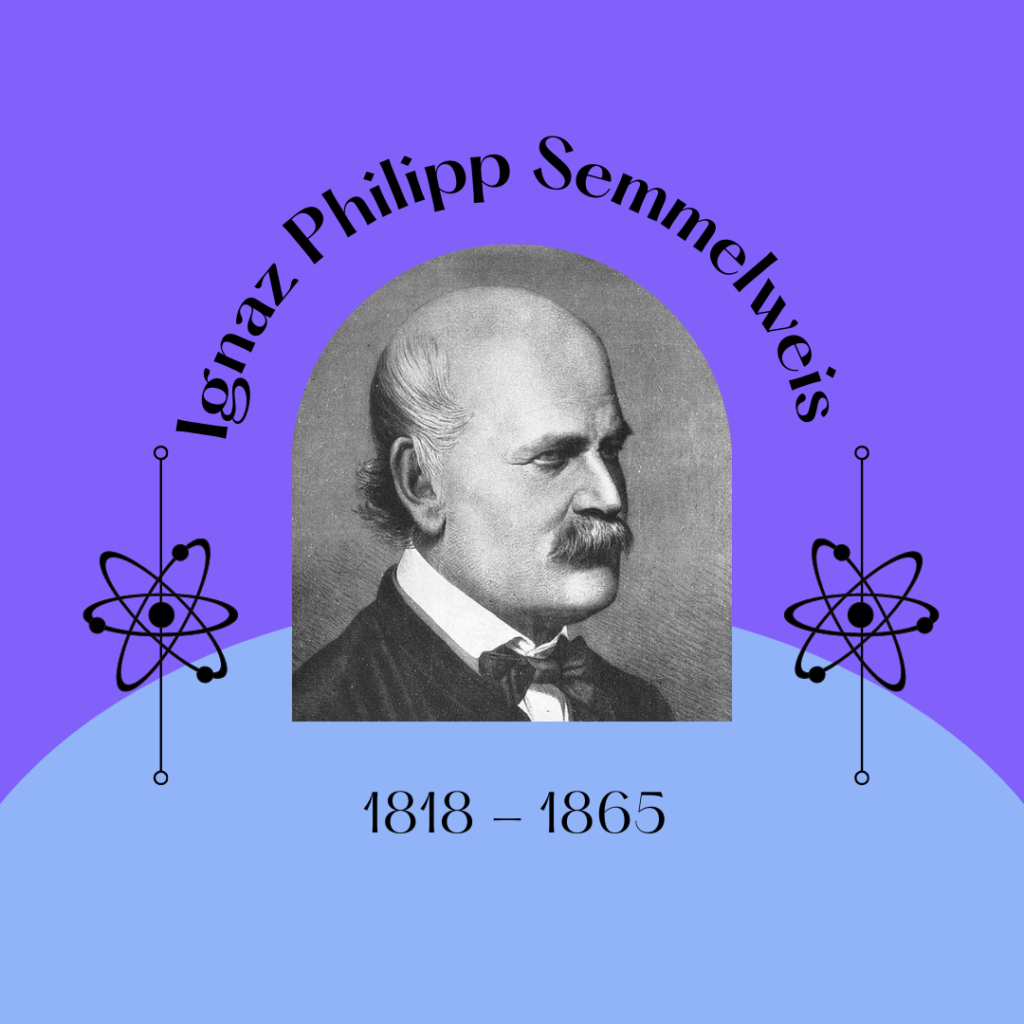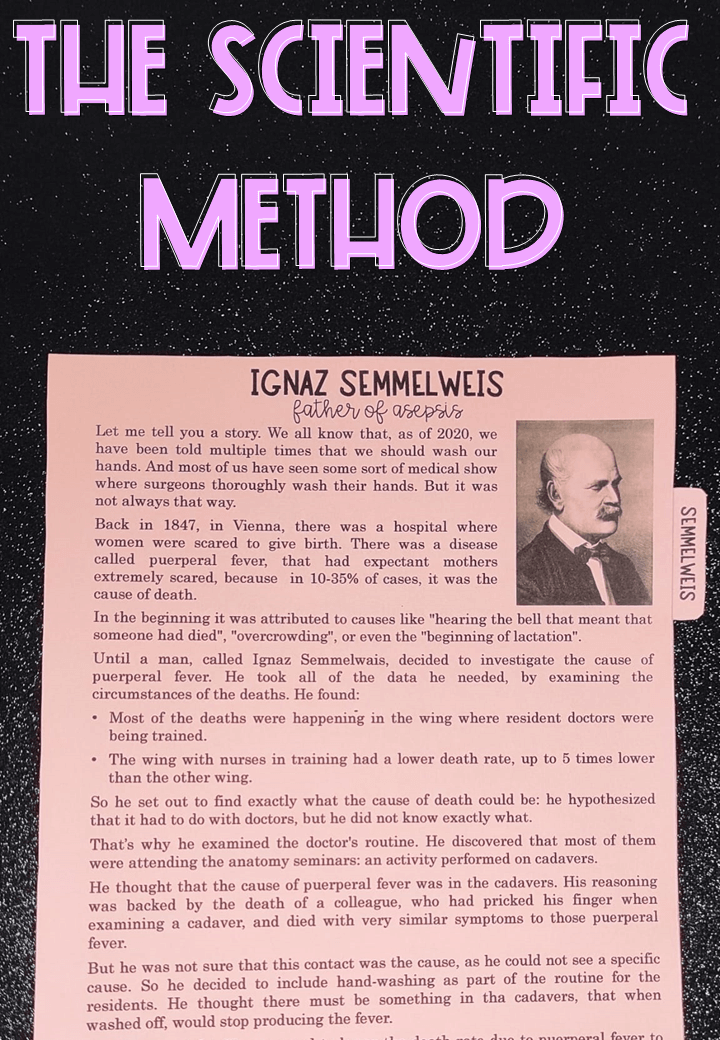Last year, I started my 14-year-old students’ science course with a story. In hindsight, maybe I should have explained systems and such as well, but I decided to start the year off strong with teaching the students about Ignaz Semmelweis’s story. And I plan on teaching the scientific method this year by telling my new students the same as I told my last set of students.

Contenidos
Let me tell you a story
Let me tell you a story. We all know that, as of 2020, we have been told multiple times that we should wash our hands. And most of us have seen some sort of medical show where surgeons thoroughly wash their hands. But it was not always that way.
Back in 1847, in Vienna, there was a hospital where women were scared to give birth. There was a disease called puerperal fever, that had expectant mothers extremely scared, because in 10-35% of cases, it was the cause of death.
In the beginning it was attributed to causes like «hearing the bell that meant that someone had died», «overcrowding», or even the «beginning of lactation».
The man himself…
Until a man, called Ignaz Semmelwais, decided to investigate the cause of puerperal fever. He took all of the data he needed, by examining the circumstances of the deaths. He found:
- Most of the deaths were happening in the wing where resident doctors were being trained.
- The wing with nurses in training had a lower death rate, up to 5 times lower than the other wing.
Therefore he set out to find exactly what the cause of death could be: he hypothesized that it had to do with doctors, but he did not know exactly what.
Thats why he examined the doctor’s routine. He discovered that most of them were attending the anatomy seminars: an activity performed on cadavers.
He thought that the cause of puerperal fever was in the cadavers. His reasoning was backed by the death of a colleague, who had pricked his finger when examining a cadaver, and died with very similar symptoms to those puerperal fever.
But he was not sure that this contact was the cause, as he could not see a specific cause. So he decided to include hand-washing as part of the routine for the residents. He thought there must be something in tha cadavers, that when washed off, would stop producing the fever.
His experiment
And he was right. He managed to lower the death rate due to puerperal fever to 1% simply by making doctors wash their hands.
After that, he published his findings, but his peers, including people of authority like Rudolf Virchow, were not impressed by his results for two reasons.
- First of all, he blamed most of the deaths on doctors, something they did not appreciate.
- Secondly, Dr Semmelweis was not able to provide a suitable explanation, because he did not know he had just set the stage for a new science: microbiology.
Because he knew he was right, but nobody believed him, he had a breakdown, was taken to a mental facility and was killed by a streptococcus infection that could have been prevented by his own protocol. He died in 1861, and his theory would be confirmed in later studies in microbiology.
My activities for teaching the scientific method
This year, I will be teaching a full unit for scientific method, and I plan to use this same story and other non-ficion texts to illustrate all of the steps and the concepts behind the scientific method in a way that my students can understand, and can apply.
To do so, the first day of class, I will be telling my students the story I just told you, and on the basis of that story (which I will make available on their LMS), we will be «discovering» the scientific method by using the socratic method.
If you want to try teaching the scientific method like this, I have created a set of scientific method activities, all in one workbook/flipbook for the scientific method, where you will be able to find not only three scientific method non-fiction texts, but comprehension questions on the text, critical thinking questions on the experimental setup of these scientists.
However, you can sign up for my email list and get a free version of this scientific method activity to get it for free:
I you want to check out the activities for teaching the scientific method:
If you would like an experimental activity for your students to learn about the scientific method and photosynthesis.
